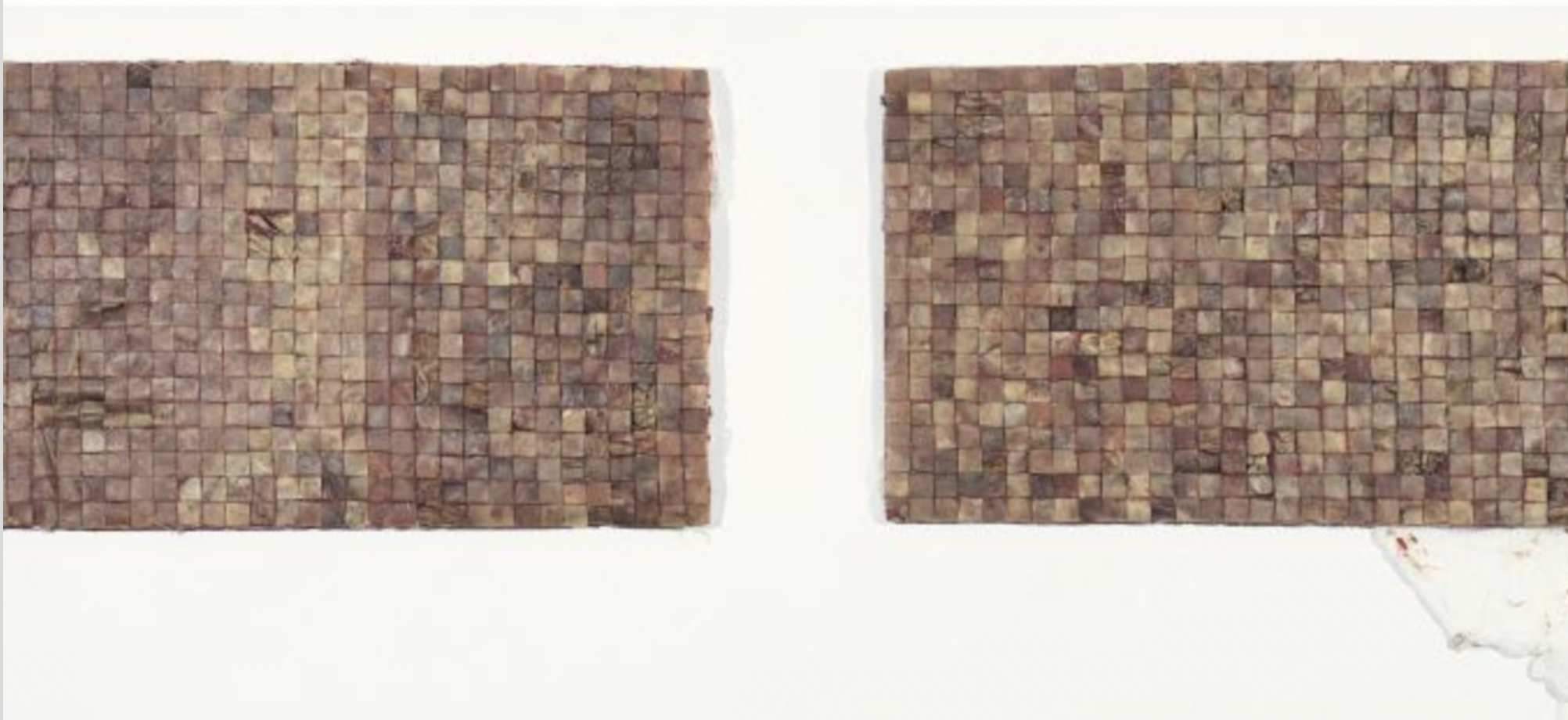Curator Jill Dawsey Implores Viewers to Hold On
‘For Dear Life’, Curator Jill Dawsey Implores Viewers to Hold On
“I finally defined what disability beauty is for me: when I’m with someone who has experienced extended stigma and inhabited a double consciousness, there’s an intensity of presence that is just gorgeous. That’s disability aesthetics. That’s disability beauty.” – Riva Lehrer
Museum of Contemporary Art San Diego’s senior curator Jill Dawsey examines the passable and the disregarded body, questioning where stigma is created and learned. In artist Kiki Smith’s Untitled (Skin), 1990, two doormat size rectangles of ‘skin’ chunked into squares, fit together like jumbo sized flesh coloured chicklets . Some squares are gristly with gooey bits seeping out, others with fingernails embedded and partially poke out of the wax, gauze, shoe polish, and pigment used to create the piece; Smith’s firsthand knowledge of the disregarded body as influenced by her loss of friends and sister to the AIDS epidemic.
The intersectional approach of ‘For Dear Life: Art, Medicine, and Disability’, is what takes it from an exhibition about disability, into a seminal conversation. In recognising that stigma, pride, prejudice, discrimination, and privilege all implicate the disabled identity, For Dear Life is able to attend to, in room after room, the widespread sequestering of the art world’s representation of disabled artists.
Five digital C-print photographs hung at knee level depict a man in DIY Superman costume with a red skateboard affixed to his back, walking, crawling, and laying near various NYC train subway stations. For over forty years, artist Pope L. held solo and group ‘crawls,’ “performances in which the artist or volunteers arduously crawled on the street level through urban spaces…Pope L’s crawls embodied the vulnerability and social taboo of living on the street and disrupted the public’s capacity to ignore people experiencing houselessness- the majority of whom have physical or mental disabilities.”
The history of disability rights runs concurrent to the civil rights movement. In April of 1977, disability rights protesters enacted a ‘sit in’ at the 50 United Nations Plaza Federal Office building in San Francisco, lasting 28 long days. Many of these activists had disabilities requiring special attention. It was the Black Panther Party that brought them hot meals daily. This intertwined history replicates on the gallery walls with artists portraying the human body as disabled ‘and.’ Laura Aguilar, disabled and queer Latinx artist, references her auditory dyslexia along with her experiences of diabetes and depression in Access + Opportunity = Success, 1993. The artist is photographed, holding signs reminiscent of the ‘down on luck, anything helps’ cardboard variety, defining the word ‘Access’, adding ‘Opportunity’ with definition, and equalling the two to ‘Success’ as defined as “1. A favorable result 2. The gaining of wealth, fame, etc 3. A successful person, A thing.”
For one day in April of 1981, Sophie Calle hired a private investigator to follow her. Unbeknownst to the investigator, she also documented her experience of being watched, exhibiting the reports side by side in La Filature (The Shadow, 1981.) At the tail end of 1984, Sophie had planned on meeting her boyfriend in Japan, she arriving from Toyko, he from France. She arrived at the hotel to find he had ghosted her. For months, she conversed with strangers, asking them of their greatest pain, and recording her story on one panel, the stranger’s on the other, and side by side these daily comparisons of pain serve as a litmus test of who has experienced the greater pain? Calle’s work holds a magnifying glass up to the seam between self and stranger and picks at the edges, smooths the rough bits out and dovetails what’s left until the separation is whisper thin.
The Lynx, from the series The Blinds, 1986, exhibited in ‘For Dear Life’, began when Calle interviewed people who had been without sight from birth about their ‘image of beauty.’ The Lynx visually narrates one interviewed subject with a portrait, a photograph of a lynx’s fur and the comment:
‘Lynx fur. There is something definitive about this fur. It combines the boundless energy of a wild animal- you can still feel its life-and the infinite sleekness of its fur. It can only be beautiful. That’s obvious.’
So similar, this acknowledgement of a double consciousness as artist Riva Leher’s earlier definition of disability beauty. Capturing Leher’s words in a larger context, ‘For Dear Life’ through scope of situating disability firmly in art history, adding layers of artist ‘and,’ these marginalized yet concurrently relevant streams of what is passable and what is disregarded, breathes with plenty of space between, and the intensity of presence that is just gorgeous.

